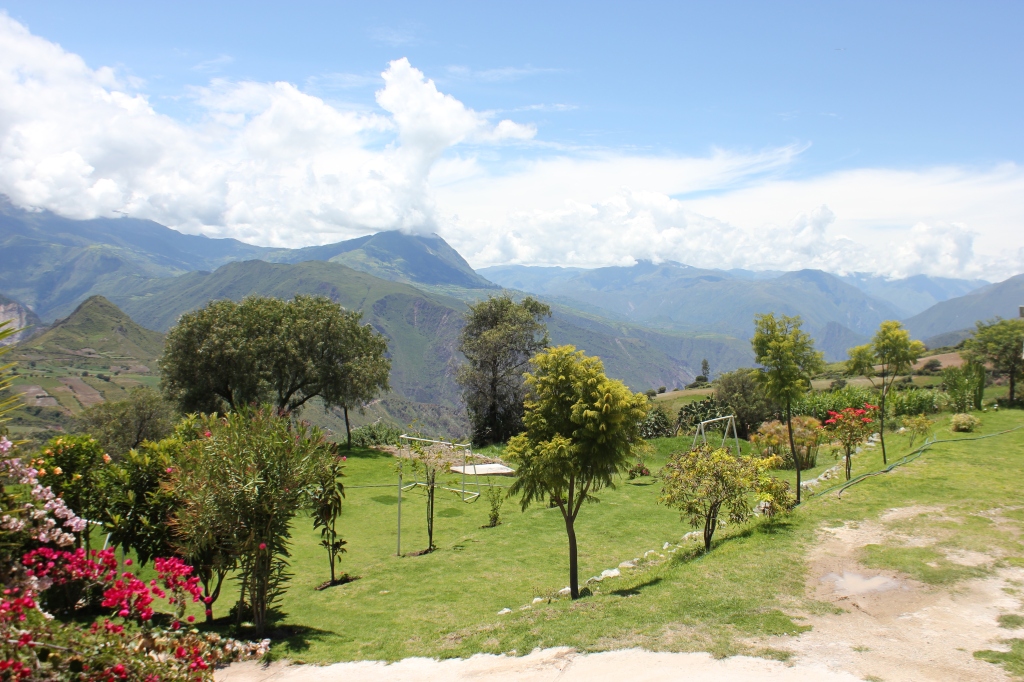Curahuasi is located in Peru, in the heart of the Andes mountain range at an altitude of 2,688 metres. It is one of the nine districts of the Abancay province in the department of Apurímac. The town has 16,500 inhabitants. The inhabitants’ main occupation is the cultivation of anise(ed), hence Curahuasi’s nickname of Global Anise Capital.
The languages spoken in Curahuasi are Spanish and Quechua. In town, most people speak both, the further away from the centre, the more people only speak Quechua.

The Casa Lena building is located:
- at a 20 minutes’ walk from the Curahuasi centre,
- 10 minutes away (in car) from the Diospi Suyana Hospital (a German non-profit organization),
- 25 minutes away from the thermal baths in Cconoc,
- 1 ½ hours away from the city of Abancay,
- 2 ½ hours West of Cusco city and the Sacred Valley, where Machu Picchu is located.
Curahuasi is very safe! You don’t have to be afraid of being mugged or robbed there.
Cusco is also relatively safe. However, as in any big city, always watch your personal belongings carefully and do not walk through deserted streets at night!
Volunteers and students who arrange their accommodation through Oye LENA get a room at the main building of Casa Lena. There are private rooms and shared rooms. The bathroom, kitchen and living room are shared.
The project takes place in the classrooms on the ground floor of the building.
If friends or family are coming to visit you, they can stay in a hotel in the village or in the Casa Lena B&B. The B&B has three rooms, each with a private bathroom and a shared kitchen and terrace.
Take a look at casalenaperu.com for pictures of the building, rooms and surroundings!
Volunteers and visitors can also ask Casa Lena for tours in Curahuasi and its surroundings (canyoning, puenting, river tubing, horseback riding and so on).

At Oye Lena itself
The project has 7 classes:
The orange class was named the “creative class” and contains all the craft & recycled materials.

The green class is the “play class” where the children can puzzle, build, explore, play with plasticine, string pearls and much more.


The black room is the “multi-sensory room” in which we offer different stimuli (visual, audible, tactile, those regarding taste and smell)

The white classroom is the “movement classroom” where we organise physiotherapy, Sherborne and other similar activities.


In the ‘letter & number class’, we mainly teach first and second-year pupils as well as preparing the oldest preschoolers for first grade.

We set up the “do-like corners” such as the shop corner, kitchen corner, doll corner, theatre corner, car corner and construction corner for the toddlers outside.
Our ‘casita’, a garden shed for volunteers and tourists to relax in, was transformed into the oldest pupils’ classroom.
And the last room, ‘the atelier’, is primarily used for workshops for children with disabilities, creating artisanal products like shampoo bars and soap, and learning to sew. Other children also sometimes attend sewing classes or other workshops here.
Finally, we also have a reading corner where the children can cozy up to read.
Outside, we have four play areas: a large concrete square with a swing and a slide, a lawn with a climbing frame, a swing, a slide, a seesaw and a trampoline, a snooze area with a house and two rabbits and a soccer/volleyball pitch.
In the office you will find construction material, board games, writing materials, and others. All the theme boxes for the toddlers are also there.

